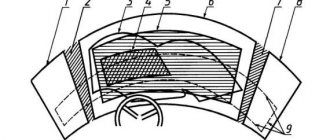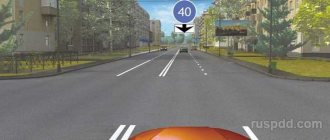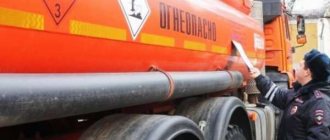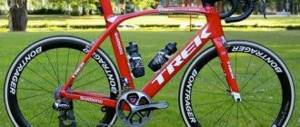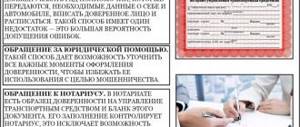What does the environmental class of a car show?
At the beginning of 2021, St. Petersburg took second place in the country in the anti-rating of cities with the dirtiest air - and this taking into account that the city has a small number of industrial facilities. The reason is the large number of cars that poison the air with exhaust gases.
What does the environmental class of a car show?
The European standard, which obligated manufacturers to modernize models and established a certain environmental class for the car, significantly reduced the amount of emissions into the atmosphere, but did not completely solve the problem. What is the environmental class of a car and what does it affect?
It is estimated that one average car per year with a mileage of 10,000 km consumes 4,100 kg of oxygen from the atmosphere and emits more than a ton of toxic substances, including lead, carbon monoxide and its compounds, sulfur dioxide, etc.
The environmental class of a car is a conditional gradation that reflects the amount and intensity of toxic waste that the car emits into the air. Today, automakers are required to comply with environmental standards and equip their vehicles with technologies and devices that reduce toxic emissions.
All vehicles today have a certain eco class or Euro standard, which depends on:
- year of production;
- fuel used;
- model, brand, country of origin;
- the presence of filter systems in the design.
Taking this into account, the car is allowed or prohibited to be used on the roads, brought into the country, crossed green areas, etc.
In 2021, the maximum environmental class for the Russian Federation is fifth.
History of Euro certification
By the beginning of 1990, the purity of the atmosphere on the planet had catastrophically decreased. Cars running on gasoline and diesel engines were recognized as the most harmful to the environment. In 1992, a special regulation was developed in Europe, called the protocol for limiting the level of atmospheric emissions from road transport.
The first protocol was called Euro-1; the document specified the parameters of toxic emissions that were allowed to be emitted by cars.
Russia is a signatory to the Convention on Road Traffic adopted in Geneva. All restrictions prescribed in European environmental standards apply on the territory of the country.
The protocol is reviewed annually and the amount of permissible emissions is reduced. When developing the protocol, the following substances that constitute the concept of “vehicle emissions” are taken into account:
- Particles included in exhaust gases.
- Evaporation from a specific type of fuel.
How many environmental classes are there for a car?
- The first standard by which cars equipped with a gasoline engine were classified, Euro 1, began to operate in Europe in 1992. The protocol set minimum emission requirements. In the Russian Federation, the Euro-1 standard worked until 2005.
- The Euro-2 protocol was developed for EU countries in 1995; in the Russian Federation, the standard began to operate in 1999, along with the Euro-1 protocol. According to the protocol, the permissible level of emissions into the atmosphere was reduced by 100%, and fuel evaporation standards were tightened by 50%. Today, there are practically no cars with such a level of emissions - the engines are either recycled or modernized to a minimum percentage of emissions.
- The Euro 3 standard operated in the EU until 2004. The regulations included standards for both gasoline and diesel engines. For Russia, the protocol remained valid until 2013.
- Euro 4 was next. New amendments to the environmental class standard for cars were adopted in 2005. The Russian Federation joined the protocol in 2010. The standard tightened the amount of emissions and reduced the emission allowance standards by 40% compared to the previous protocol. Euro-4 was in effect in Russia until 2021. According to the standard, vehicles with an environmental safety class lower than Euro-4 could not be imported into the country. Manufacturers were required to upgrade engines in accordance with the protocol. Maximum emission standards for Euro 4:
- carbon dioxide - 4 g/km;
- carbon compounds - 0.55 g/km;
- solid carbons - 2 g/km.
- Euro-5 is the latest eco-standard that has been in force in the Russian Federation since 2015. European countries have been using the regulation since 2008. From 2021, the import of cars lower than Euro 5 into the country is prohibited.
Toxic emissions from cars into the atmosphere
Today there are restrictions on the entry onto public roads of cars whose environmental class is lower than that established for a certain zone. To increase the current eco class of a car, you need to:
- legally convert the engine;
- obtain an environmental inspection certificate;
- make appropriate amendments to the vehicle documentation at the State Traffic Safety Inspectorate.
Ecological classes of trucks
- Freight vehicles must also have a note in their passport indicating which environmental vehicle class they comply with. As usual, trucks are assigned a second or third class. If the year of manufacture of the car is old (not “younger” than 2005), then the class usually corresponds to zero .
- By the way, increasing the environmental safety class is quite doable; for this it is necessary to re-equip the engine. This must, of course, be done not independently, but in specialized enterprises that issue a standard certificate stating that the re-equipment work has been carried out.
For freight
- You should contact the traffic police with this certificate and other documents for the car, where the class upgrade will be recorded, incl. and in the vehicle passport.
- But the latest generation of medium-tonnage MAZ, called the “Zubrenok”, has already reached Euro 5 standards in its development, although at the very beginning of the century it corresponded to the first class. This became possible thanks to the equipment with modern engines produced by the Yaroslavl plant, as well as the latest versions of German MAN.
Why might you need an environmental class car?
You will need to find out what environmental class a car has if the model is bought abroad, imported into the country, or if you need to clear customs of a vehicle that has already been imported into the state.
Also, the constituent entities of the Russian Federation establish their own rules for collecting transport tax. The tax rate depends on the vehicle category, year of manufacture, and environmental class. There is no single tax rate in the Russian Federation; each region sets its own transport tax amounts.
In the transport tax return, line 110 in section 2 is reserved for indicating the environmental class. In addition, to accurately determine the environmental class of the car you will need:
- To understand which roads you can travel on legally.
- Is it necessary to convert the exhaust system to a higher one?
The exception is transport, which is considered self-propelled vehicles, i.e. The maximum speed of such a vehicle does not exceed 40 km/h.
How are transport tax and environmental class related?
When calculating and paying TN, it is necessary to take into account the environmental class, according to which generally accepted stat. 361 Tax Code, rates may change down or up. Regulatory requirements for the application of environmental class in relation to vehicles classified as categories N and M are contained in clause 17 of the Technical Regulations CU TR CU 018/2011 (put into effect by Decision of the CU Commission No. 877 of 12/09/11).
The division of vehicles and their engines contains Appendix 1 of the specified Technical Regulations. Here in subsection. 1.4 provides a gradation of vehicles depending on the level of emissions of pollutants into the atmosphere. According to the current classification, there are 5 types of environmental classes - from zero to fifth. Depending on information from the regions of the Russian Federation, TN rates may change. In order for an organization to correctly calculate car tax, it is necessary to find out whether an environmental class has been established for the vehicle or not.
How to find out the environmental class of a car
There are several ways to check the environmental class of your car:
- study PTS;
- registration certificate;
- by VIN;
- through online services of government agencies.
According to STS
Only owners who have a new type of document in their hands have the opportunity to find out the environmental class of a car from the car’s registration certificate. In the new certificates, the environmental class is written in letters in the corresponding column; drivers comply with the requirement of signs 5.35. 5.36, 8.24 (passage of cars of the corresponding eco class).
Owners of the old certificate must exchange the STS, the effect of restrictive signs will apply to them from July 1, 2021.
According to vehicle title
In the PTS of the new model, the environmental class of the car is indicated in the 13th position. In old-style documents, the parameter may be on a different line; for some, the auto class is not set. In this case, the car is assigned a zero standard or Euro-1.
Through Rosstandart
The Rosstandart portal provides detailed data on manufacturers and summary tables of vehicle eco-class compliance by country and year of manufacture. Just go to the service and view the information you are interested in.
“Green” cars – saving the environment
In addition to the table by country and manufacturer, the service provides vehicle characteristics by make and model. The motorist needs to open the “Approval Information” page, enter the model and view the characteristics of the vehicle.
For example, for the Audi A8 the approval number is CU RU E-DE.AYA04.00070.P5I1, assigned Euro-5.
By VIN code
An effective option remains to check a specific car by VIN code through the environmental classes of Rosstandart cars. An electronic database for vehicle owners is provided on a separate page. 17 code characters are entered into a separate window; after a few minutes, the car owner receives detailed information on the model indicating the environmental class of the car.
If the manufacturer has not entered data on the emission standards that are present on a particular car, you must contact the State Traffic Safety Inspectorate with an application to assign a specific eco class after upgrading the car.
Changing and increasing the environmental class of a car in the traffic police step by step
To make changes to the PTS relating to the environmental safety class, you must contact the State Traffic Safety Inspectorate, namely the MREO. This must be done if the car was manufactured earlier than 2008.
To change the data on the environmental class of a car, you need a certificate of conformity. It can be obtained by contacting an official dealer or by conducting an examination.
To change the environmental class of a car in the traffic police step by step:
- Step 1. To make changes to the PTS of a car purchased in the Russian Federation, you must contact the factory that produced it or the nearest representative office to obtain an approval number.
- Step 2. If you cannot obtain a document from the dealer, you should contact a certified company for an examination that will determine what class the car belongs to.
- Step 3. If environmental safety turns out to be low, you need to re-equip the car: adjust the fuel system, install filters, etc. After this, apply again for an expert opinion.
- Step 4. Taking with you your passport and all documents related to the car, an expert opinion or certificate of approval, submit all this to the MREO, where changes are made to the title.
- Step 5 . Pay 350 rubles in state duty.
Fines in the Russian Federation for violating the standard
Today in the Administrative Code there is no article regulating the compliance of a vehicle with one or another eco class. Violators of environmental parameters are fined according to the list of parts of Art. 12.16 Code of Administrative Offenses, “Failure to comply with the requirements prescribed by traffic rules.” Namely:
- Violation of the “Left Turn” sign, Art. 12.16 p.2 fine – from 1000-1500 rubles.
- Movement of freight transport in the presence of a “No passage” sign, Art. 12.16 p.6., fine – 500 rubles. (except Moscow and St. Petersburg). If the violation occurs within these cities, the fine increases to 5,000 rubles.
- Art. 12.16 part 1 indicates that for any violation of the requirements of road signs, the driver will face either a warning or a fine of 500 rubles.
From 2021, the environmental class of a car will become a decisive factor in possible restrictions when driving on roads of a certain category. Car owners are recommended to replace the STS with a new document now and purchase cars on the secondary market that are at least Euro-4.
Lack of a “platform” and environmental class: what changes await motorists in 2021
January 15, 2021, 15:13 - Public news service - OSN Russian motorists are waiting for new changes in traffic regulations. The Public News Service will tell you what rules will come into force in 2021 .
Signs and fines
From March 1, new signs may appear in the regions to indicate the location of traffic cameras. Signs 6.22 will be placed 150–300 m before the control zone in front of each new camera outside the city and one at the entrance to the populated area. Together with them, until September 1, 2021, the previous signs 8.23 “Photo and video recording” will also be used.
From July 1, sign 5.35 “Zone with restricted environmental class of motor vehicles” will prohibit the passage of vehicles without the specified environmental class. The fine for this violation will be 500 rubles.
Since the beginning of January, new fines for unpaid travel on toll sections of roads have already come into force. The fine is assessed on the 25th day of unpaid debt. For the owner of a passenger car it will be 1.5 thousand rubles, for a truck and bus - 5 thousand rubles.
Public services
From May 1, through the government services portal, it will be possible to conclude contracts for the sale and purchase of cars and sign them with an electronic signature. The corresponding order of the Ministry of Digital Development of the Russian Federation will allow the traffic police to quickly obtain information about the new owner of the vehicle.
Photo: https://umfc48.ru
Appealing traffic police fines can now also be made through the public services portal. However, this will require an electronic signature. To appeal a fine, you must register on the portal and provide irrefutable evidence of innocence.
Car condition
From March 1, the rules for conducting technical inspections will change. From now on, the entire process of conducting a technical inspection will be recorded on a camera; diagnostic cards will be filled out electronically and signed with an enhanced electronic signature of a technical expert. If in an accident the vehicle does not have a diagnostic card due to a malfunction, the insurer will be able to file a recourse claim in court.
Since the beginning of the year, the composition of car first aid kits has also changed. Some adhesive plasters, sterile bandages and dressing bags were excluded from the composition, but medical masks were added. The rules apply to new first aid kits, and previously purchased ones are valid until their expiration date, but no later than January 31, 2024. Motorists can also independently assemble a medical kit according to the approved list.
For those who are not scared by the list of innovations for 2021 and who still want to join the ranks of car enthusiasts, there is some news. From April 1, the exam procedure for obtaining a driver's license will change. The traditional “platform” will disappear from the program, but elements such as hill start and parallel parking will be transferred to urban testing. The half-hour trip to the city will be checked by an authorized traffic police officer in real conditions.



